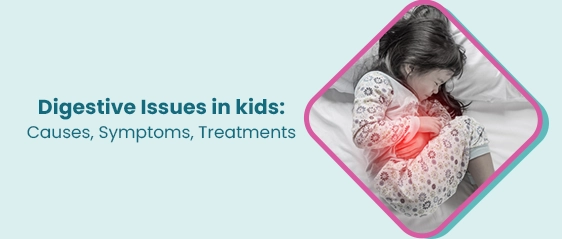
Empowering Pregnancy and Smooth Delivery: A Comprehensive Guide
- 14 Aug 2023
Your Comprehensive Guide to a Smooth Delivery
Bringing a new life into the world is a remarkable journey with a sense of wonder, anticipation, and transformation within it. As you embark on the path of pregnancy, one of the most pivotal moments awaits you: the day of delivery. This guide unveils pregnancy and childbirth mysteries, providing insights, preparation tips, and essential knowledge to ensure a smooth and empowering delivery experience.
Understanding the Miracle of Pregnancy
Pregnancy is a profound journey that spans roughly 40 weeks, divided into three trimesters. During this time, your body undergoes incredible changes to nurture and protect the developing life within you. From the initial formation of the embryo to the growth of organs and the eventual formation of a little human being, every stage is a testament to the marvel of life.
Preparation for the Big Day
As your due date approaches, thoughtful preparation becomes paramount. Here are some key steps to consider:
- Prenatal Care : Regular visits to your healthcare provider are crucial. They will monitor your health, conduct necessary tests, and ensure you and your baby are progressing well.
- Birth Plan : Craft a birth plan that outlines your preferences for labor and delivery. Discuss your wishes with your healthcare provider and remain flexible as situations may evolve.
- Knowledge is Power : Educate yourself about the stages of labor, pain management options, and potential complications. Attend prenatal classes to familiarize yourself with the process.
- Support System : Surround yourself with a strong support system, including your partner, family, and friends. Their encouragement and presence can provide comfort during labor.
- Healthy Lifestyle : Maintain a balanced diet, exercise gently with your healthcare provider's approval, and prioritize rest to keep your body and mind prepared.
Embracing the Labor Process
Labor is a unique journey, and each woman's experience is different. It typically consists of three stages: early labor, active labor, and the delivery of your baby. Here's what you can expect:
- Early Labor : Contractions begin irregularly and gradually become more consistent. Focus on relaxation techniques, breathing exercises, and keeping hydrated.
- Active Labor : Contractions intensify, and your cervix begins to dilate. Stay mobile, change positions, and use pain management techniques such as breathing, massage, or epidurals if desired.
- Transition Phase : The cervix fully dilated, leading to the transition phase where contractions are strong and frequent. This phase can be intense, but remember you're getting closer to meeting your baby.
- Delivery : During the delivery phase, your baby moves through the birth canal and into the world. Pushing and controlled breathing help guide your baby's journey.
- Post-Delivery : After your baby is born, you'll experience the placenta's delivery and the first bonding moments. Your healthcare team will provide care and support.
Exploring Delivery Options
There are various delivery options to consider:
- Vaginal Birth : The most common method, involving the baby passing through the birth canal.
- Cesarean Section (C-Section) : a medical procedure in which the infant is delivered via abdominal incision. It's frequently scheduled for health-related reasons.
- Water Birth : Labor and delivery occur in a warm water pool, offering relaxation and pain relief.
- Home Birth : Some women want to give birth at home with a skilled midwife's help.
The Power of Support
During labor and delivery, having a strong support system is invaluable. Your partner, family members, and healthcare providers can all be crucial in providing comfort, encouragement, and guidance. Communicate your preferences with them, ensuring they understand your wishes.
Conclusion: Embrace the Journey
As you navigate the incredible journey of pregnancy and approach the momentous day of delivery, remember that each step is a testament to your strength and the beauty of new life. By preparing yourself physically, emotionally, and mentally, you can confidently approach childbirth. No matter the path you choose or the twists that may arise, the journey of pregnancy and delivery is a powerful testament to the strength of women and the miracles they bring into the world. Embrace this chapter with courage, positivity, and the anticipation of welcoming your baby into your arms.
Our gynecology specialists possess a comprehensive grasp of various aspects of women's health, ranging from routine check-ups and preventive care to intricate surgical procedures. Their expertise spans across areas such as prenatal and postnatal care, family planning, menstrual health, reproductive disorders, and gynecological surgeries.
Frequently Asked Questions
1. What is the process of labor and delivery like?
Labor and delivery consist of stages such as early labor, active labor, transition, and the actual delivery of the baby. Contractions increase in intensity, the cervix dilates, and eventually, you'll experience the moment of childbirth.
2. How can I prepare for labor and delivery?
Preparation involves regular prenatal care, crafting a birth plan, gaining knowledge about the labor process, enrolling in prenatal classes, creating a support system, and maintaining a healthy lifestyle.
3. What is a birth plan, and why is it important?
A birth plan is a document outlining your preferences for labor and delivery. It helps communicate your desires to your healthcare team, ensuring your experience aligns with your values and wishes.
4. What pain management options are available during labor?
Pain management options include relaxation techniques, breathing exercises, massage, epidurals, and other medications. With the help of your healthcare physician, decide which choice is best for you.
5. What is a C-section, and when is it performed?
An abdominal incision is made during a cesarean section (C-section), a surgical operation in which the baby is born. It is frequently carried out for medical purposes, such as problems during delivery.
6. How can I create a strong support system during labor and delivery?
Your support system includes your partner, family, and healthcare providers. Communicate your preferences, fears, and expectations with them to ensure they can provide the support you need.
7. What should I pack in my hospital bag for labor and delivery?
Pack essentials such as comfortable clothing, toiletries, important documents, snacks, entertainment, and items for the baby like clothes and blankets.
8. Can I have a natural birth even if I'm considered high-risk?
The possibility of a natural birth depends on your individual health and medical conditions. The safest birthing method for you can be determined by consulting your healthcare practitioner.




